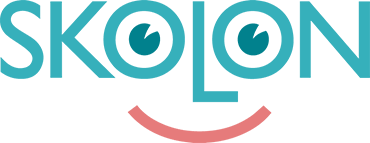Secure Essential Funding to Integrate KUBO into Your STEM Curriculum.
As technology progresses and a growing number of occupations demand technical expertise, STEM education has become crucial. However, tightening school budgets is making it more and more challenging to supply young learners with the necessary STEM resources.
Are you eager to incorporate STEM into your classroom without relying on your school’s budget? Now is the time to pursue funding for STEM technology.
Navigating the intricate landscape of grants and funding options can be a daunting task. With numerous funding sources, requirements, and application processes to sift through, determining where to begin can be overwhelming.
To assist you in this journey, we have compiled a comprehensive guide featuring a wealth of funding opportunities, including federal grants, private foundations, and grant-writing tips. This valuable resource will help streamline your search and maximize your chances of successfully securing the funding you need to bring KUBO into your classroom.
Funding Sources Overview
There are numerous grants are available to support K-5 STEM education. Let’s explore the various funding sources at your disposal.
Federal Grants
Federal education grants are available to schools or districts to facilitate the development and implementation of innovative STEM programs for students.
The National Science Foundation
The NSF funds research and education activities across all fields of science and engineering, providing science education opportunities to students of all ages. Schools and educational organizations can apply for these grants through the NSF website.
ESSA (Every Student Succeeds Act) – Title IV, Part A
The ESSA federal funding aims to enhance students’ academic achievements by increasing access to high-quality STEM education. Schools can use these funds for various activities, such as implementing programs and activities that support access to a well-rounded education or activities to improve the use of technology, academic growth, and digital literacy of all students.
The 21st Century Community Learning Centers
The 21st CCLC grant promotes the establishment of community learning centers that deliver academic enrichment and support services to students during non-school hours, with an emphasis on high-poverty and low-performing schools. The program’s objective is to help students meet state and local academic standards by offering a diverse array of academic, artistic, and cultural enrichment opportunities.
State Grants
Many states and local organizations offer grants to support STEM education in K-5 schools. These may include state departments of education, school districts, and nonprofit organizations. The grants may be focused on a specific area of STEM, such as computer science, or they may be more broadly aimed at improving STEM education for all students in a specific state.
Check out the State Grants overview or reach out directly to your State’s Department of Education to learn about available programs and grants.
Corporate and private grants
Many businesses and organizations are committed to supporting STEM initiatives as they recognize the importance of cultivating future generations of skilled workers and leaders. Below, we provide more information on some of the top corporate and private grant programs and tips for securing these grants.
Motorola Solutions Foundation
The Motorola Solutions Foundation supports STEM education initiatives through its Innovation Generation Grants. These grants are designed to help schools and nonprofit organizations create and sustain innovative, hands-on STEM programs for K-12 students. Priority is given to programs that serve underrepresented populations, including girls, minorities, and students from low-income backgrounds. Visit the Motorola Solutions Foundation website for more information on application deadlines and eligibility.
Toshiba America Foundation
The Toshiba America Foundation offers two grant programs for K-12 education, with a focus on science and mathematics. The first program provides grants for projects that improve K-5 science and math education, while the second program supports projects designed for grades 6-12. Both programs prioritize projects that are innovative, hands-on, and have a direct impact on student learning. Visit the Toshiba America Foundation website to learn more about the application process and guidelines.
The Bayer USA Foundation
The Bayer USA Foundation supports STEM education by providing grants to schools and nonprofit organizations that create innovative programs focused on science education and workforce development. Priority is given to projects that engage underrepresented populations and promote science literacy. Visit the Bayer USA Foundation website to learn more about their grant programs and application procedures.
The American Honda Foundation
The American Honda Foundation (AHF) is committed to supporting educational initiatives that promote a greater understanding and appreciation of mathematics, science, and technology. The foundation provides grants to nonprofit organizations, K-12 schools, colleges, universities, and other qualified institutions. Grants typically range from $20,000 to $75,000 and are awarded for a one-year period. Organizations are eligible to apply for a grant every 12 months, regardless of previous funding.
The Charles Lafitte Foundation
The Charles Lafitte Foundation focuses on supporting initiatives that address the unique needs of each student, promoting personalized and creative learning experiences. The foundation supports the integration of technology in classrooms, helping schools and educators create engaging and interactive learning environments. While not exclusively dedicated to STEM education, CLF has a broader commitment to enhancing educational opportunities and fostering academic success for students from all backgrounds.
Lockheed Martin’s Philanthropic Giving
Lockheed Martin Philanthropic Giving recognizes the importance of cultivating the next generation of skilled workers and leaders in STEM fields and invests in programs that inspire and prepare students for future success. The organization invests in K-12 STEM education initiatives that provide students with hands-on, project-based learning experiences.
Search for additional grants and funding opportunities through organizations like the National Science Teachers Association (NSTA), Stemfinity, and GrantFinder.
Tips for Securing STEM Funding
- Develop a clear vision and plan: Define your school’s STEM goals, objectives, and expected impact on student learning. This information will be critical when applying for funding.
- Clearly outline the expected outcomes and benefits of your STEM program. Be prepared to provide data and evidence to support your claims.
- Many grant providers seek projects that have a lasting impact on students and the community. Outline how your program will continue to grow and evolve beyond the grant funding period.
- When applying for a corporate or private grant, make sure your proposal aligns with the organization’s goals and values. Research the company or foundation and emphasize how your project supports their mission.
- Stay informed about funding opportunities: Regularly check federal, state, and private funding sources for new opportunities.
- Establish connections with grant providers, either in person or through social media. Attend conferences, workshops, and networking events to build relationships with potential funders and stay informed about new funding opportunities.
- Be persistent. Securing corporate and private grants can be competitive. Don’t be discouraged if your initial application is not successful. Revise your proposal, learn from the feedback, and continue to apply for other opportunities.






